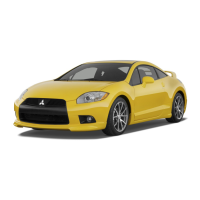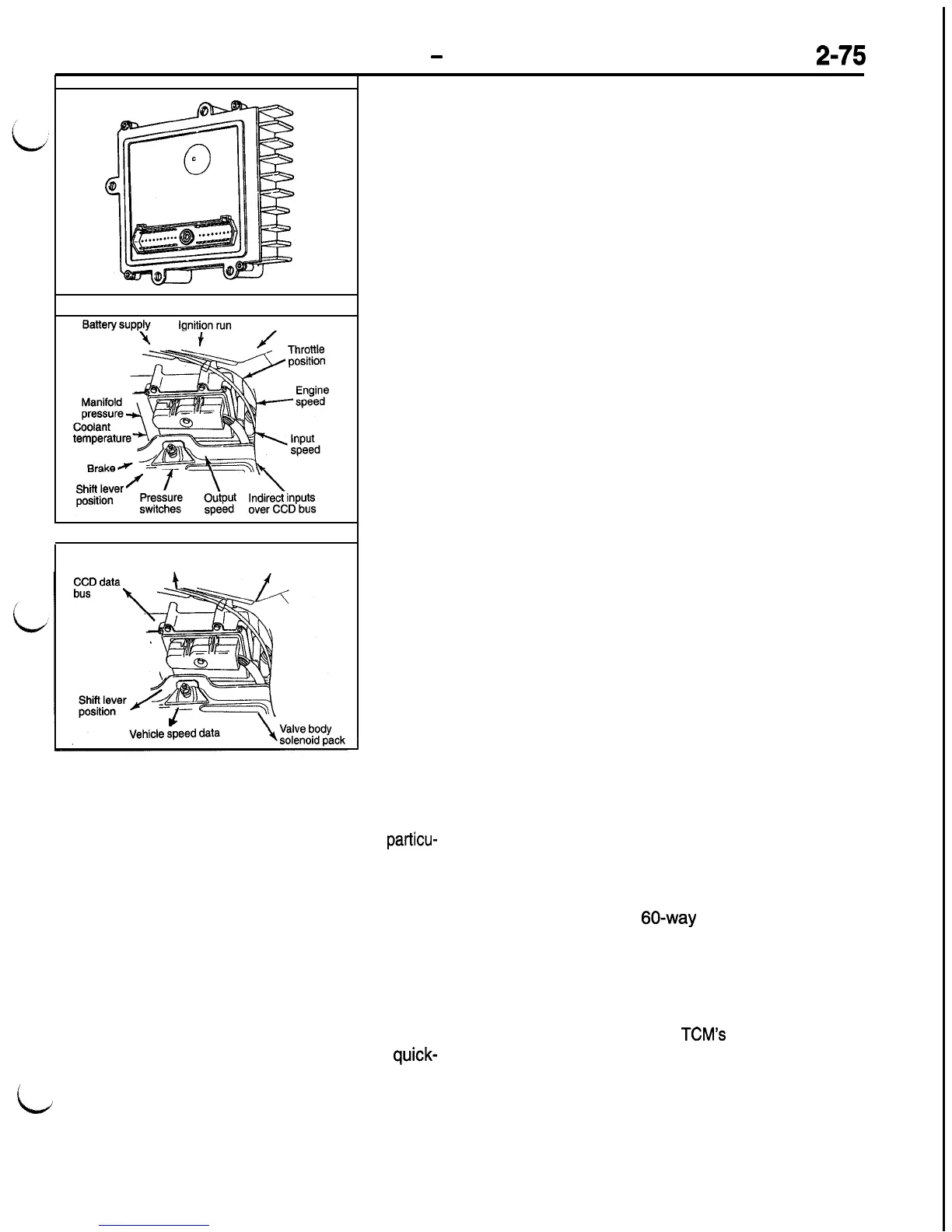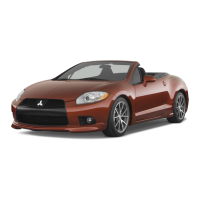POWER TRAIN
-
Automatic Transaxle
2-75
Engine cranking
Scan tool
communication
Transmission
control relay
J
Transmission Control Module Operation
The main reason for having the transaxle controlled
by the TCM is to have superior shift quality. The
TCM actually “learns” the characteristics of a
particu-
(1) Adaptive Memory
The TCM automatically adapts for engine perfor-
mance variations and clutch torque variations to
provide consistent shift quality for the life of the
transaxle. This learning capability is called adaptive
memory. If for some reason the TCM loses its
(2) Quick Learn
A quick-learn procedure is available to pre-program
the shift characteristics into the TCM. The
quick-
learn procedure simply speeds up the TCM learning
L
process. The vehicle still must be driven and shifted
several times in each gear range during the road
TRANSMISSION CONTROL MODULE (TCM)
The Transmission Control Module (TCM), is the brain of the
transaxle. It receives information from several inputs for making
decisions on how the transaxle should function. Some of the
information is used only by the TCM, and some of the informa-
tion is shared with other components through the CCD bus.
The CCD bus is simply a communication link between the
TCM and other electronic components on the vehicle.
TCM Inputs
The TCM uses various inputs to determine when to upshift
or downshift and when to engage or disengage the torque
converter clutch. The TCM also uses these inputs for continuous
feed-back data for controlling shift quality. Without any input,
the TCM has no way to determine the state of the transaxle
and therefore cannot control its operation as designed. The
illustration is a list of the input sensors and signals that the
TCM uses to determine control over its outputs.
TCM Outputs
In order for the TCM to perform, it must have the necessary
number of outputs (signals or devices) that cause the transaxle
to function as desired. Some of these controlled functions (or
outputs) are used by the TCM to cause upshifts or downshifts
(clutch control). Other TCM outputs are information signals
sent across the CCD bus to another control module. The illustra-
tion provides a list of the output signals or devices controlled
by the TCM.
lar transaxle to optimize vehicle shift quality using
its program logic.
memory, through a loss of battery power or the
disconnection of its
60-way
connector, it takes
approximately ten shifts for the TCM to re-learn
shift characteristics.
test. This will fully utilize the
TCM’s
adaptive memory
capability. The quick-learn procedure is accessed
through transaxle diagnosis and performed by the
scan tool (MUT-II).

